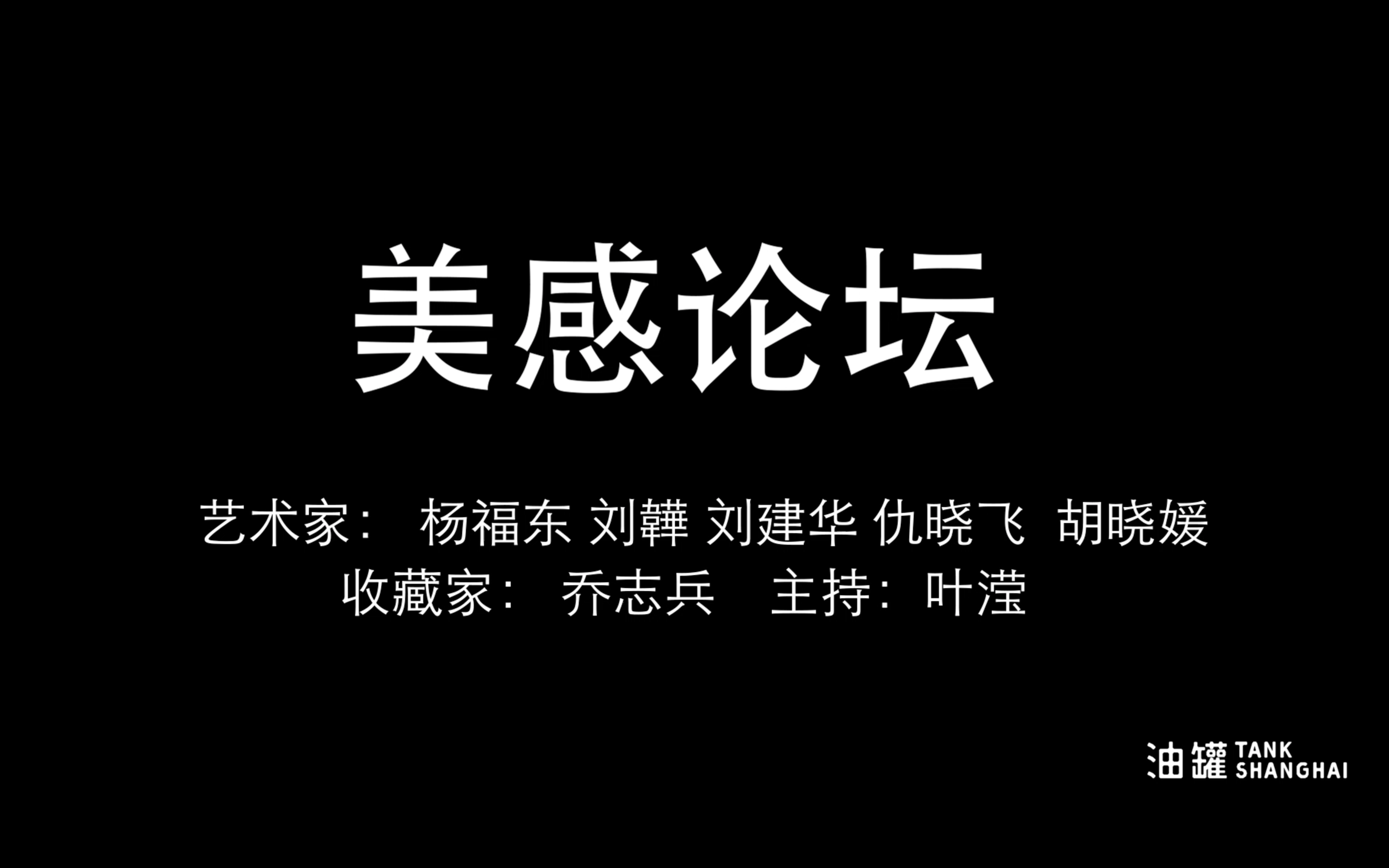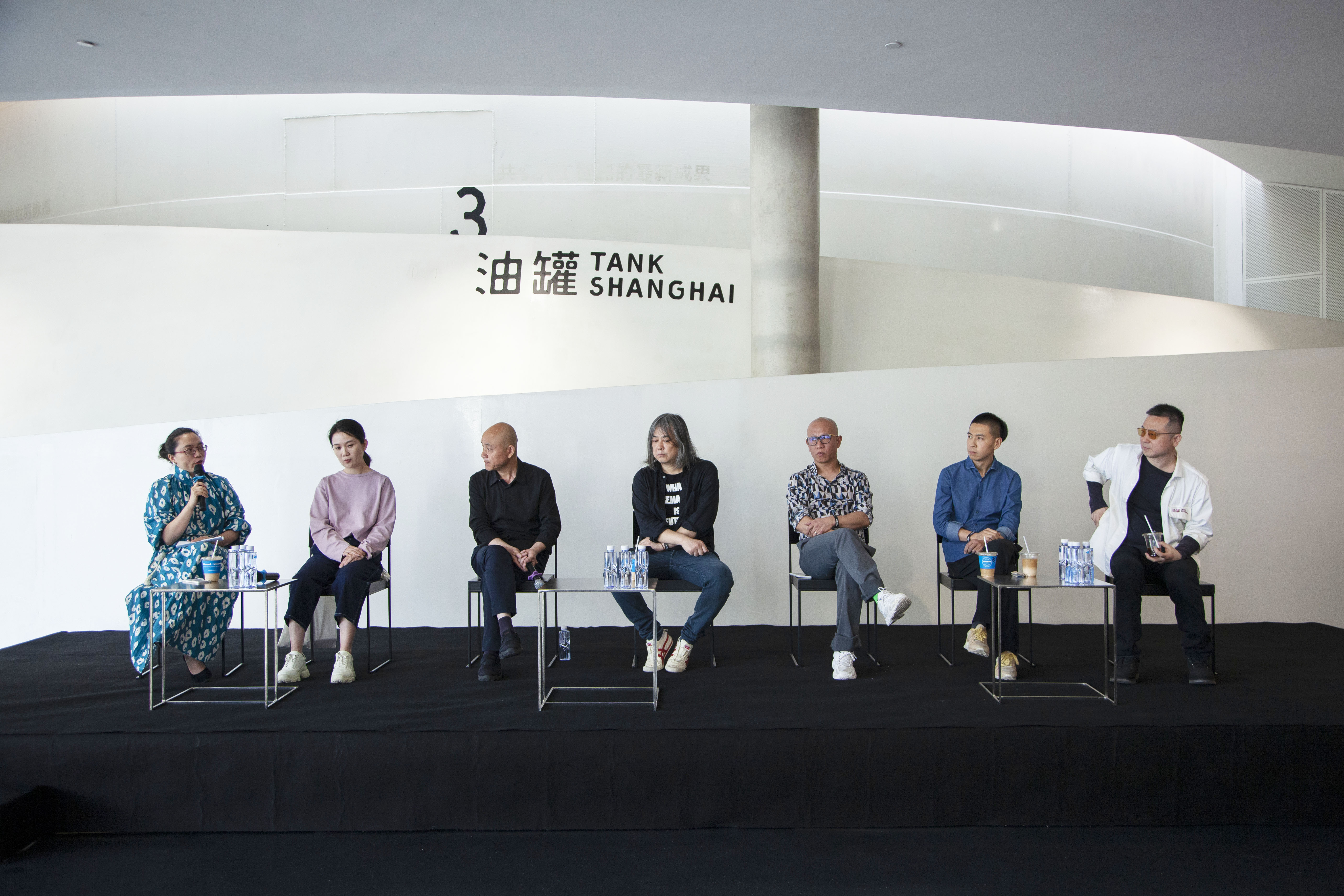
When different people discuss “aesthetics”, what dimensions do they use to feel and express it?
TANK and TANC co-organized the art forum Animating Sensibility - Conversations on Creating and Collecting on May 9 at TANK Grand Hall. The forum was hosted by Ying Ye, editor-in-chief of TANC, and invited artists Yang Fudong, Liu Wei, Liu Jianhua, Qiu Xiaofei, Hu Xiaoyuan, and collector Qiao Zhibing, founder of TANK, to discuss the magnetic field of art created by the inner feelings and perceptions of artists and collectors in connection with the external environment.
Moderator Ying Ye began by pointing out that this art forum originated from the TANK exhibition Collection of Qiao Zhibing | Aesthetics, which opened in March this year, aimed to go beyond the boundaries of the exhibition, inviting the forum guests to talk in depth about the new creation, exhibition and new starting point of the changing art ecology of Chinese contemporary art.
Organic Association, Dynamic Symbiosis.
The Echoes of Artworks in the Museum
This is Qiao Zhibing's fifteenth year of collecting contemporary art from China and abroad, and exhibition Aesthetics, which triggered this forum, is essential for sorting out the history of his collection over the past decades. At the same time, Qiao aims to take this opportunity to explore the interesting dialogues between the works. At the beginning of the forum, he revealed the background of the exhibition's preparation and the connotation of the theme Aesthetics: “I hope it will be a kind of dialoguing dynamics between half Chinese artists and half international artists.” He cited two sets of dialogues: the “beauty of purity” in Liu Jianhua's work and the “beauty of wild power” in Thomas Houseago's work; coincidentally, both works stem from the sculptor's exploration of special materials. “Both materials require fire”. And Liu Wei and Theater Gates “are both artists who are particularly beautiful in their visual presentation, and both use different materials, and both actually point to society and politics behind them, and actually have some subtle connections in a space”.
.jpg) Thomas Houseago and Liu's works are in a dialogue across the space.
Thomas Houseago and Liu's works are in a dialogue across the space.
When it comes to the so-called “beauty of purity” and the starting point of the “Blank Paper” series in the exhibition, Liu believes that the inspiration and origin of all these works must be attributed to the material. He says that initially it was just a “flash of an idea” - porcelains has a fragility that traditional materials do not have, and its production process contains the thickness of time and temperature. Liu Jianhua discovered and tapped into an urgent need to be explored in an unknown form. “Porcelain is quite an interesting material. Sometimes it is a bit like a process of practice to confront it often, and then the process of making it will also make you nervous, make you anxious, make you have a sense of helplessness. I think this is a state that fits with reality”, says the artist. Returning to Qiao Zhibing's comments on spatial relationships, Liu Jianhua's “Blank Paper” series and Houseago's Ghost of a Flea I in the exhibition pavilion form a tension with each other that contains infinite possibilities: as Qiao Zhibing described, “the surface is calm, but the waves are rolling under water”. The rhythm generated between the environment and the works is breathing with emotion.
.jpeg) Liu Jianhua exhibits works, (from left to right) Blank Paper (2008-2019); Bone (2008-2009).
Liu Jianhua exhibits works, (from left to right) Blank Paper (2008-2019); Bone (2008-2009).
“Each of my works has a specific point of origin, because for me all of my works have a relationship to reality.” As an artist, Liu Wei rarely gives his work an extremely clear meaning, but considers each of them as an inspiring starting point. He believes that the initial meaning of a work is unnamable. The question of “meaning” is often presented to curators and viewers. Similarly to Liu Jianhua's “material” origins, Liu Wei's artistic creations begin with material discoveries in his life, influenced by all the powerful material displays in his environment, such as “billboards are rarely used in the twenty-first century, so they always have a sense of being waited, waiting. I think there is a little bit of theology or the concept of time, of matter, of being saved, of being waited for”. When asked about the dynamic dialogue with Theaster Gates, Liu Wei's insight is that the work is not static, it is imbued with action and dynamism.
I give it a movement or an action to tear it apart, to stretch it out infinitely in a complete time or in a complete material, but to be pulled in a limited way, to put an action in it ...... The work is a state when it happens, and then it is an understanding when it is withdrawn from the exhibit hall. It is the same as the words.”
.jpeg)
Forum scene
Yang Fudong also highlights the connection between the works and the environment and the conditions of creation between his solo exhibition Endless Peaks and the collection exhibition Aesthetics. The subtlety of creation and exhibition methods, as well as the narrative relationship between the “fate” of the works themselves, are some of his thoughts based on his expertise in recent years. Yang Fudong suggests that the artist's exhibitions can produce special fields that map the difference between holistic and partial ways of seeing, and that the concept of the whole points directly to an organic issue that integrates painting, photography and video. Yang Fudong's attitude towards his personal works is open and calm, “Maybe it's a bit like each work has its own course in its life, it may go everywhere, so I think this is a very good process.”
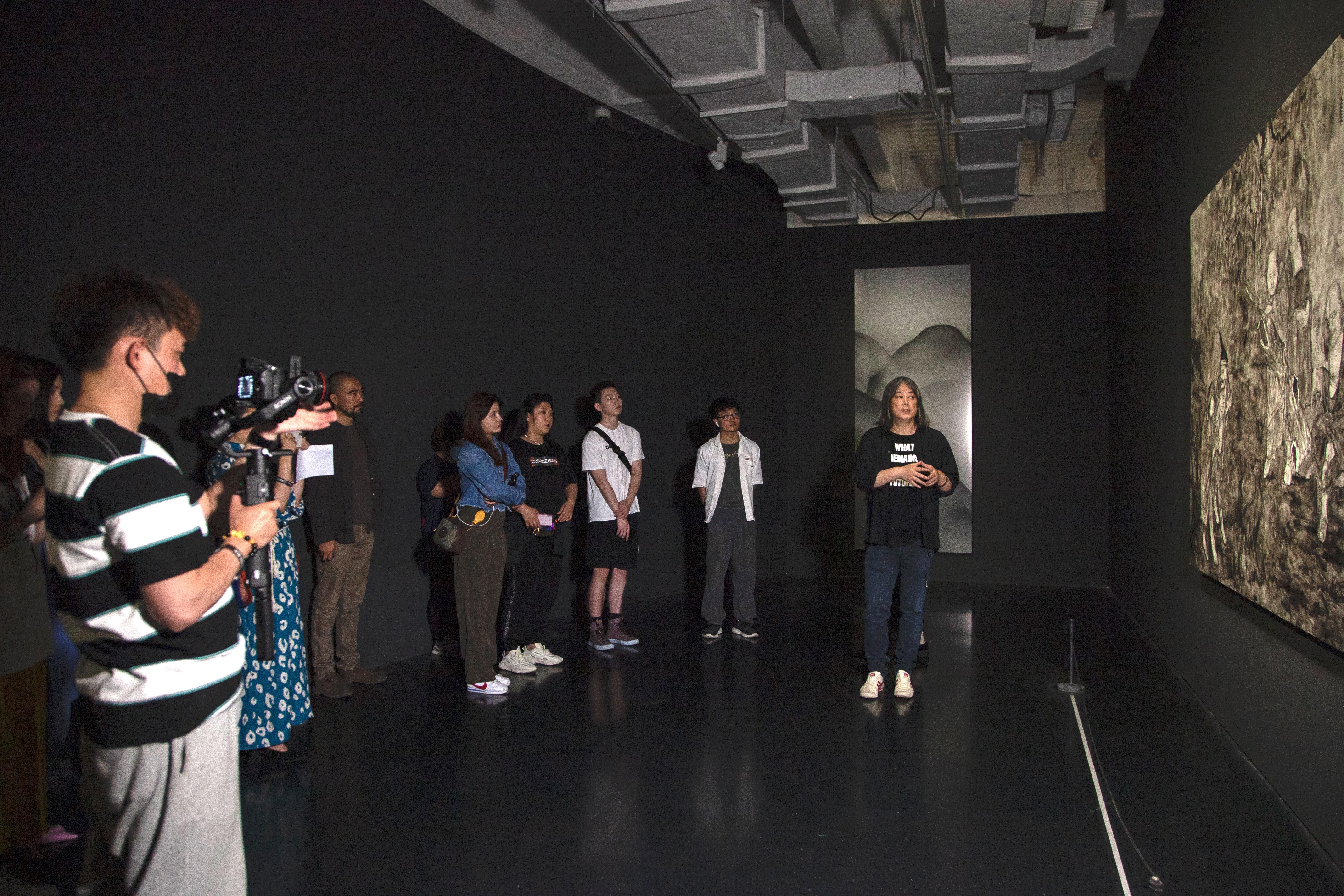 Yang Fudong gave an artist's tour to the audience and talked about the way to view the “Endless Peaks” series.
Yang Fudong gave an artist's tour to the audience and talked about the way to view the “Endless Peaks” series.
.jpeg) Yang Fudong, The Light That I Feel 1 (above), "The Light That I Feel 2" (below); 2014
Yang Fudong, The Light That I Feel 1 (above), "The Light That I Feel 2" (below); 2014
For Qiu Xiaofei, the “Parasol Pagoda” series has spanned six years, and the works themselves have also undergone a change from figurative to abstract stages.In 2020, Parasol Pagoda has moved away from purely figurative and abstract discussions, and in addition to showing “the relationship between human biology, potential consciousness dynamics and psychology”, Qiu Xiaofei's artwork has expanded to “cultural, racial and human thinking borders”. In Qiu Xiaofei's view, all media have their own characteristics and history, and the history of the medium of painting itself “is actually the same as the history of humanities, including the history of human beings, the history of human body's perception, the history of thinking, and a reflection on this thing, so in fact every stage will have a result on the thinking of the medium. ”
.jpeg) Qiu Xiaofei, Parasol Pagoda, 2014
Qiu Xiaofei, Parasol Pagoda, 2014
Unlike the above-mentioned artists, Hu Xiaoyuan paid the most attention to the specificity of the exhibition area when she commissioned the “Forever” series “Spheres of Doubts”, and deliberately emphasized the “Aesthetics” of the collection exhibition. “In response to the physical sense that the space brings to me, I made a new push that echoes the whole exhibition and the whole space.” In Hu Xiaoyuan's view, the space in which the “Spheres of Doubts” series works are facing a horizontal curved window with a long and narrow area, which is conducive to presenting a clear sense of nuance and “forcing” the viewer to perceive the subtle changes of the smallest objects. The material of the whole work is mainly silk, aiming to wrap everyday objects and observe their changes in the flow of time and process; among these objects are ritual objects that symbolize solidified concepts and standards in the history of migration, as well as abandoned objects in the history of modern urban migration flows that “have a more living biological sense”.
.jpeg) Hu Xiaoyuan's three works revolve around the specificity of space, and are the most recent commissions for this exhibition.
Hu Xiaoyuan's three works revolve around the specificity of space, and are the most recent commissions for this exhibition.
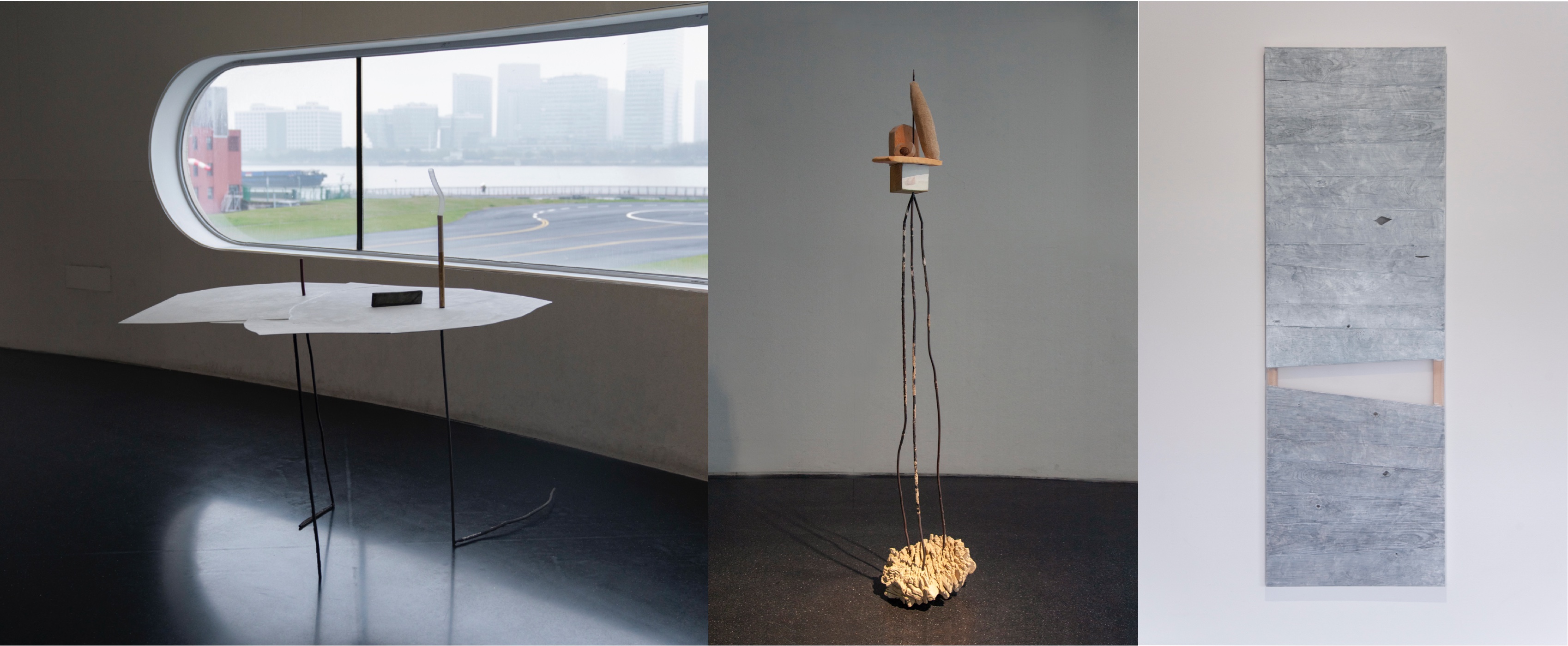
For Hu, these objects are symbolically contrasting, they have a scent, a temperature, and a dialogue with them, just like the other materials she uses. “The artist always wants to establish a particularly personal connection between herself and the world, a connection that is exclusive.” Hu summarizes, echoing her long-held belief in the personal path of the artist: a mature artist needs to have a personal habit of thinking, a coherent, individual path of thinking about the world around her. A mature artist needs to have a personal inertia of thinking, a coherent and individual path of thinking about the world around her.
In the respective definitions of “aesthetics”
Finding the answers to artistic inspiration
Towards the end of the forum, Ying Ye again raised Qiao Zhibing's earlier question, that is, how each guest should define “aesthetics”. First, for Qiao Zhibing, aesthetics originates from intuition and is multi-layered, bringing pleasure, sublimity, and hope; from the sense of beauty, it can be linked to emotion, inspiration, and even inspiration, which provides a clue for his collection at the same time.
Liu Jianhua, on the other hand, said that aesthetics is comprehensive and neutral, and exists universally in life, and the key depends on the subjective perception of individuals. At the same time, aesthetics covers all expressions in the act of art creation, including the technical and material levels. Finding aesthetics is a way to improve perception.
Liu Wei describes “aesthetics” as a classical concept that is antagonistic to today's relatively poor perception of beauty, which has been replaced by efficiency. For Liu Wei, beauty should be fleeting, “aesthetics is first of all unaware, and at the same time oriented towards the unknown; I think aesthetics comes from confrontation, that is, the moment you make a decision. That is aesthetics.”
Yang Fudong and Qiu Xiaofei define aesthetics in a more concise way: Yang Fudong believes that aesthetics is the generation of sensation, a sense of feeling; Qiu Xiaofei defines it as “appreciation” and believes that the perception of beauty is the perception of art. Hu Xiaoyuan concludes that aesthetics is “a personal experience on a particularly individualized level of perception”, involving visual, physical, and mental levels, and is a two-way emotional fluctuation.
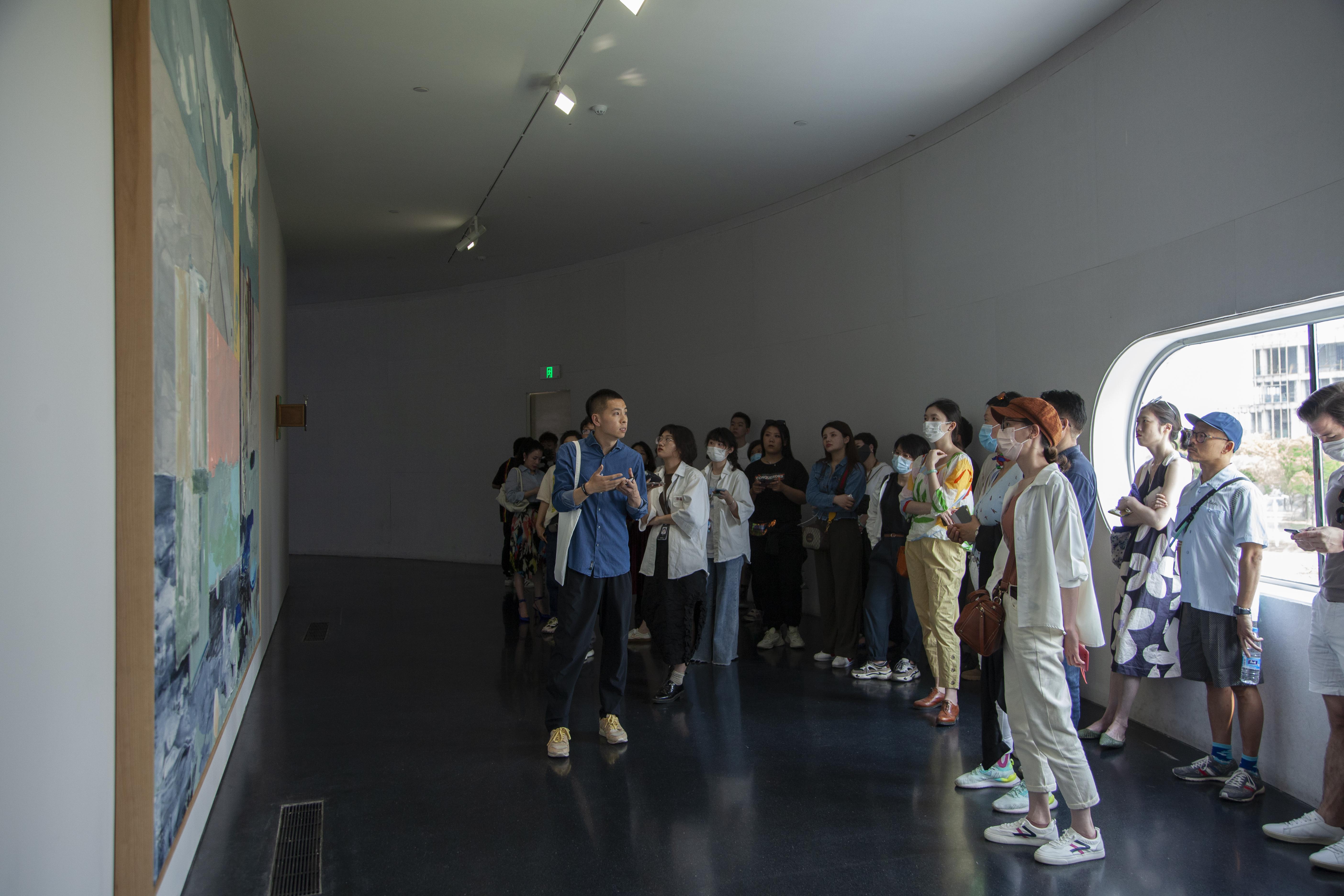
Qiu Xiaofei gives an artist's tour to the audience and talks about the creation and aesthetic experience of his work Parasol Pagoda
Five artists at the forum
(Compiled by: TANC, Wang Xiaoyue)



